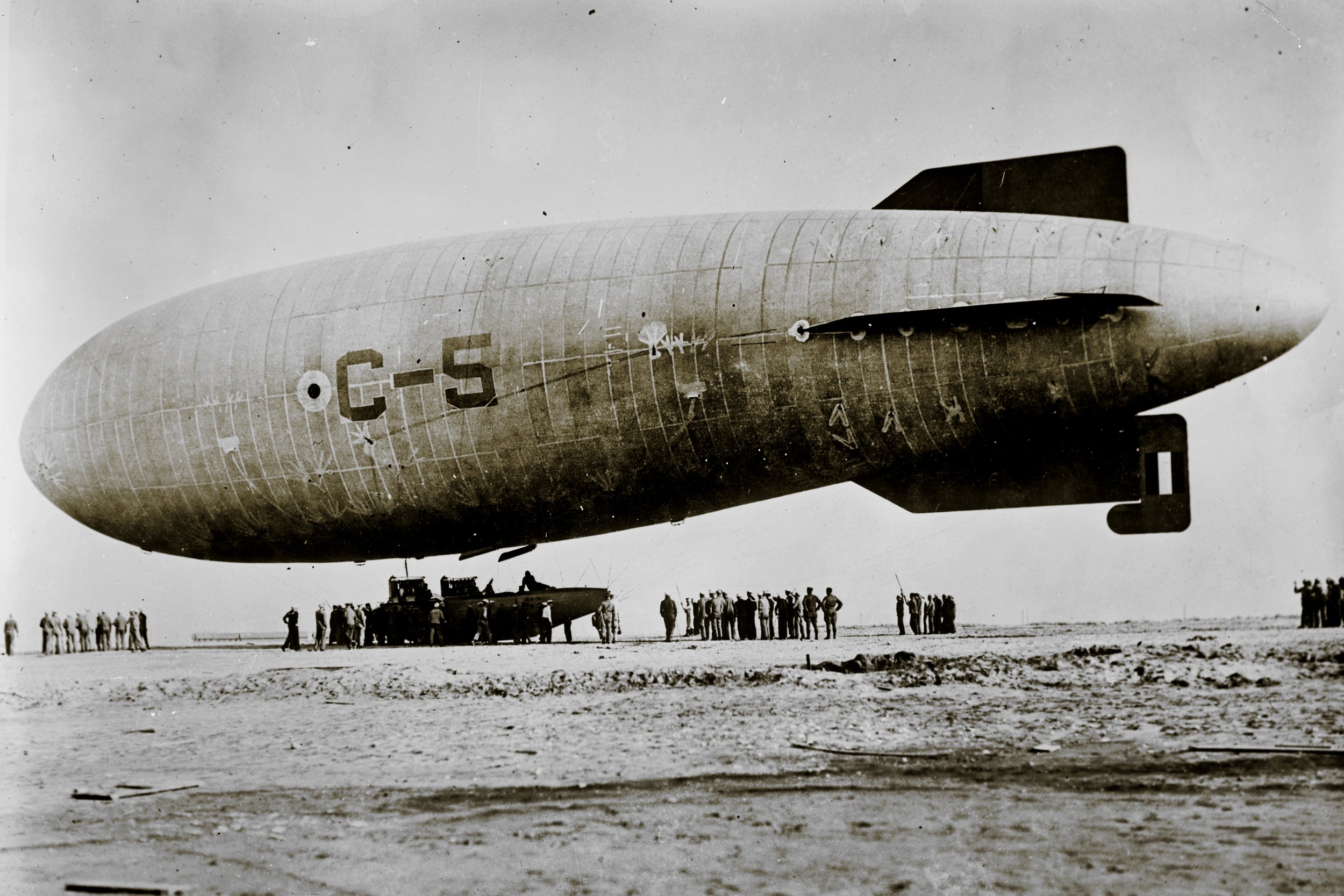The Blimp That Blew Away
Thousands of ships have been lost in the water’s surrounding Newfoundland but hydrogen-filled blimps?
Well, that number is smaller — but it’s not none.
On May 15, 1919, an American blimp, known as the ‘C-5’ arrived in St. John’s and, after a brief stay, was never seen again.
What was the C-5?
The C-5 was a hydrogen-filled blimp-operated by the U.S. Navy in 1918 and 1919. It was built by Goodyear and Goodrich and was intended for patrol duty in World War 1. It was an immense craft, nearly 60m long and 16m high.
The Story of the C-5
The C-5 was based in Cape May, New Jersey. In early May 1919 it left New Jersey headed for Montauk Point in New York.
The blimp was on a mission.
It was hoped that the C-5 would become the first zeppelin to successfully cross the Atlantic Ocean. St. John’s, NL was to be its jumping-off point.
On May 14 the C-5 left Montauk but as it approached the French Islands of St. Pierre and Miquelon (off Newfoundland’s south coast) it encountered heavy fog and thunder storms.
With fog obscuring the view the C-5 was flying nearly blind. The crew had to rely on directional wireless. The C-5 received a signal from the American ship Chicago waiting St. John’s and, with that signal, the blimp successfully found the city at about 11am on May 15.
Getting lost in the fog was not the introduction to Newfoundland that the crew was hoping for, but things were about to get much worse.
It was windy in St. John’s. Not so windy that it was remarkable for the people of St. John’s, but none of them had ever had the challenge of navigating a giant gas-filled balloon.
In fact, few —if any — had ever seen a blimp. So the arrival of the C-5 caused quite a sensation in the city. A crowd had gathered at Pleasentville to see it.
The Loss of the C-5
“Everyone was harried with fear, but they could not take their eyes of the monster which seemed to have life.”
The vessel was moored just above ground-level near Quidi Vidi Lake.
Teams of 30 or 40 American servicemen were positioned to the left and right of the C-5. The increasing wind was making their job tough. They were pulling — almost running— to keep the ship stationary. Another half-dozen people took responsibility for the ship’s giant propeller; it was crucial that it not hit the ground.
Despite their best efforts they were losing the battle. They couldn’t compete wth the increasing wind. The blimp was swaying and jumping on its moorings.
Spectators were ordered from the field. Many didn’t wait to be told, even thoughthis was years before the Hindenburg disaster, they could see things were getting dangerous. They were keen to get out before the balloon came crashing down on them.
By 4pm it was a serious squall. The C-5 swung wildly. Its stern veered close to the road causing the last remaining spectators to scatter.
The strain on the ship was immense. It looked as though the tethers might rip the canvas as the C-5’s anchor tore at the ground.
Things were dire — the crew began distributing axes. They were prepared to slash the ship’s canvas to let the gas escape and have the balloon come to the ground in an unfortunate, but planned, crash.
Before they had a chance to use the axes, at about 5:30pm a gust of wind tore the blimp free of its moorings. Ropes and wires snapped. One onlooker was struck in the head and left unconscious, another’s collarbone was dislocated.
The blimp’s crew compartment slammed into the ground. The crew aboard jumped free, injuring themselves on landing.
For a few minutes the giant balloon hung over Quidi Vidi, maybe 30 or 40 feet in the air. Then a gust of wind lifted it away from Pleasantville, over the southern hills of Quidi Vidi, above Cabot Tower and out to sea.
The blimp was unmanned and beyond control.
People on the streets of of St. John’s thought, maybe, the blimp was on an unscheduled test flight. Some speculated that it was offering a pleasure cruise above the town. It wasn’t until later in the evening they realized the C-5 was adrift.
The Aftermath
At about 6:30pm the blimp was seen 15 miles off Cape Spear. The US Navy set out in search but didn’t catch it.
It wasn’t seen around Newfoundland again.
In the coming days rumours circulated that the C-5 had been seen over the Azores and, maybe, even Ireland but these stories were never substantiated.
The C-5 was never seen again.
While there were injuries associated with the accident, it could easily have been much worse. The balloon could have crashed into the ground crew, the assembled crowd or onto the city. The impact could have been deadly and there was a threat of explosion — the C-5 was filled with extremely-flammable hydrogen.
The risks of hydrogen balloons was clearly demonstrated nearly 20 years later in the Hindenburg disaster.
The first successful transatlantic balloon flight was made by the British later that same year. The R34 left East Fortune, Scotland and flew to New York taking a route over Newfoundland and Labrador. As it had left East Fortune, a decision was made to fly over Fortune (and in some reports Fortune Harbour), NL.
They dropped messages via parachutes.
The R34 did eventually stop in Newfoundland (as evidenced by these photos), but not during its inaugural transatlantic flight.
-
American Warships Abandon Search for Drifting Dirigible, St. John’s Daily Star, May 16, 1919
Attempt of the C-5 to Cross the Atlantic, Evening Telegram, June 12, 1919.
C-5 (Blimp), Wikipedia



When World War II came to Newfoundland Botwood was forever changed — and Bob Hope got to add a joke to his repertoire.